Lord Shiva also referred to as “Bhole Nath” is one such Hindu god who treats all his devotees as one. He is the eternal truth and when one devotes himself to the worship of lord, feels contented and his chakras fall in harmony with the soul. Shiva is the ‘Gods of the Gods’ and is known as the one who bears the rage of a human and the calm composed nature of the tranquil winds. He is the divine energy, the protector and also the destroyer. If want to connect your energy with the lord itself, then pay your obeisance at these 20 most popular Shiva temples nestled in the divine Uttarakhand.
The imposing Kedarnath Temple is located in the Garhwal Himalayan range near Mandakini River in Kedarnath. It is believed that after the war of Mahabharata, the Pandavas carried a pilgrimage to the Himalayas via Haridwar for penance. They saw a glimpse of Lord Shiva from a distance but the lord hid himself from them. The Pandavas then advanced towards Guptkashi (Rudraprayag), and finally reached Gaurikund. Then a Jyotirlinga or a divine light flickered and Lord Shiva immersed from it. The Pandavas were blessed by Shiva and their sins were washed away. Lord Shankara then told the Pandavas, “From now onwards, I will remain here in the form of a triangular-shaped JyotirLinga. By taking a Darshan of Kedarnath, devotees would attain piety”.

Photo Source: Rôhít ßãñsâlâ
The grand Madhyamaheshwar temple is adorned in picturesque Mansoona village in the Garhwal Himalayas of Uttarakhand. As per a famous Hindu legend, Lord Shiva was annoyed with the Pandavas for their misconduct during the Kurukshetra war and tried to avoid them by disguising himself as a bull or Nandi. He hid in the Garhwal Himalayas but the Pandavas recognised the deity and tried to hold the bull by its tail and hind legs. The bull disappeared and, later on, appeared at five different places in the form of a hump at Kedarnath, as bahu (arms) at Tungnath, as his face at Rudranath, in the shape of his navel and stomach at Madhyamaheshwar, in the form of his jata or locks at Kalpeshwar. The Pandavas were blessed with Shiva’s five different forms and attained salvation. They also built the temples in the honour of the deity at these places.
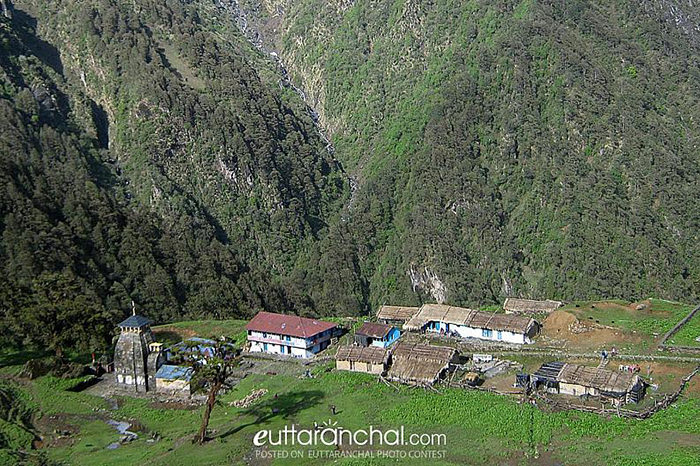
Photo Source: Mallar Sarkar
The Tungnath temple which literally suggests the “Lord of the Peaks” is the highest Shiva temple in the world and one of the highest Panch Kedar temples adorned in Tungnath in Rudraprayag district of Uttarakhand. After the bloodshed of Mahabharata, the Pandavas who had slain their own Kaurava brothers sought salvation. They made their journey to the Himalayas but couldn’t find Lord Shiva who could help them to get rid of their guilt. Shiva incarnated himself as a bull and hid at Guptkashi. The Pandava brothers chased him but couldn’t succeed. Later on, Shiva’s bahu or arms were seen at this place. Since then this place is considered to be pious and is visited by many devotees.

Photo Source: Rakesh Kandpal
This sacred temple is nestled in Chamoli district of Uttarakhand. It is here that the Pandavas were able to see Lord Shiva in the form of a hump. A palanquin or doli of Lord Shiva is brought to Gopeshwar for worshipping, which crosses Lyuti Bugyal, Panar and reaches Pitradhar where homage is paid to the ancestors. The doli then passes through Dhalabni Maidan and finally reaches Rudranath.
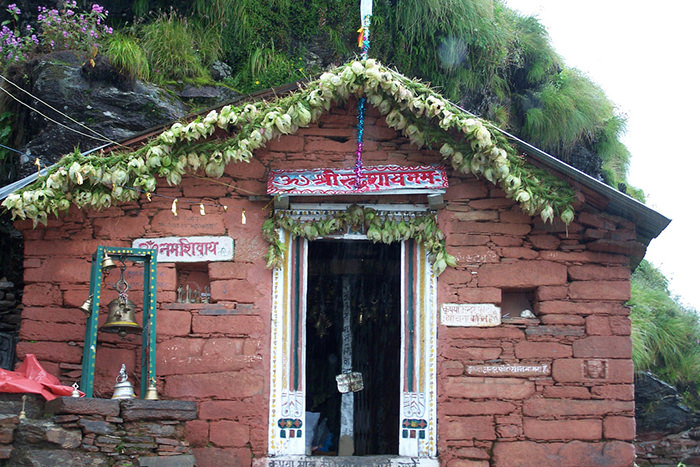
Photo Source: Himanshu Dutt/flickr
This grand temple of Lord Shiva is located in the scenic Urgam Valley nestled in the Kalpeshwar village of Garhwal Himalayas in Uttarakhand. It was here that the locks of Shiva appeared and the Pandavas were pardoned by Lord Shiva.
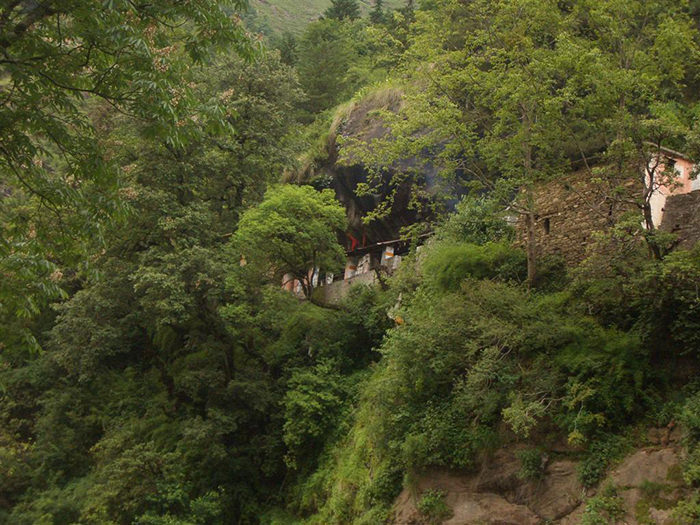
Photo Source: rolling on/flickr
This Hindu temple is cocooned in the Pauri Garhwal district of Uttarakhand. The Neelkanth Mahadev is the place where Lord Shiva drank ‘Halahala’ or the poison which originated from the sea when the gods and the demons churned the ocean to obtain the amrit or the elixir. The poison obtained during the Samudramanthan (churning of the ocean) turned Lord Shiva’s throat into blue. Hence, he was known as Neelkantha which literally suggests “The Blue Throated One”.
This famous pilgrim site is located about 35 km from Almora and is considered one amongst the twelve Jyotirlingas of Lord Shiva. The temple complex houses about 125 temples along with hundreds of marvellous stone statues.
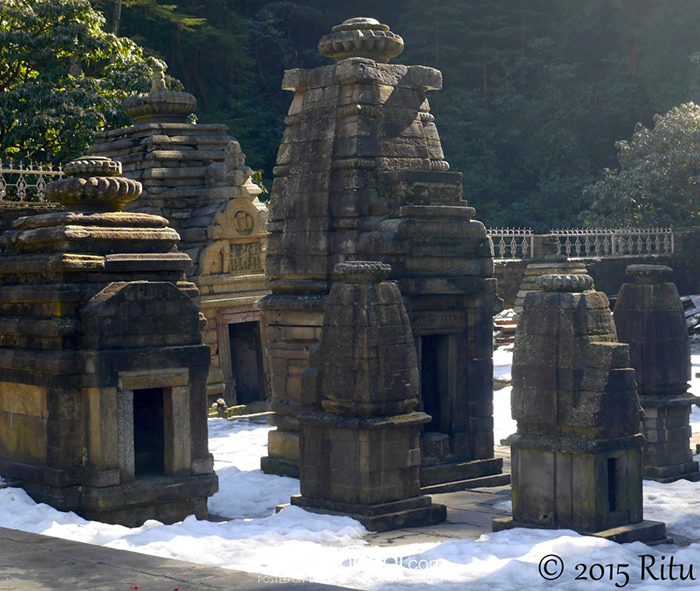
Photo Source: Ritu
The Baijnath temple is idyllically situated on the banks of river Gomti making it a tranquil abode for the devotees to find spirituality and peace. This temple is situated at a favourable distance of 16 km from Kausani.
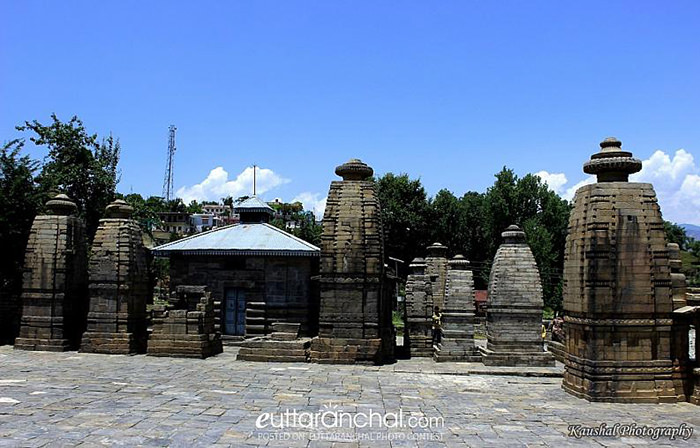
Photo Source: Kaushal
This temple is tucked in the pleasant surroundings of Gopeshwar village now a part of Gopeshwar town in Chamoli district of Uttarakhand. This ancient temple was built by the Katyuri Dynasty in 9-11 century A.D and is believed to be the holy abode of Lord Rudranath. This Gopinath temple is dedicated to Lord Shiva and Vishnu.The linga of Lord Shiva installed in this temple is worshipped as ‘ekanan’ or the face of Lord Shiva. Gopinath is the only Shiva temple where milk and water are not adorned on the deity and only bel patri is offered.
According to a Hindu legend, when Lord Shiva threw his Trishul or trident at Lord Kama (The God of Love) it got fixed at this place. The trident is made out of a complex metal which has not withered with time. It is said that even brute force cannot move it whilst the slightest touch of a true devotee can cause tremors in it.
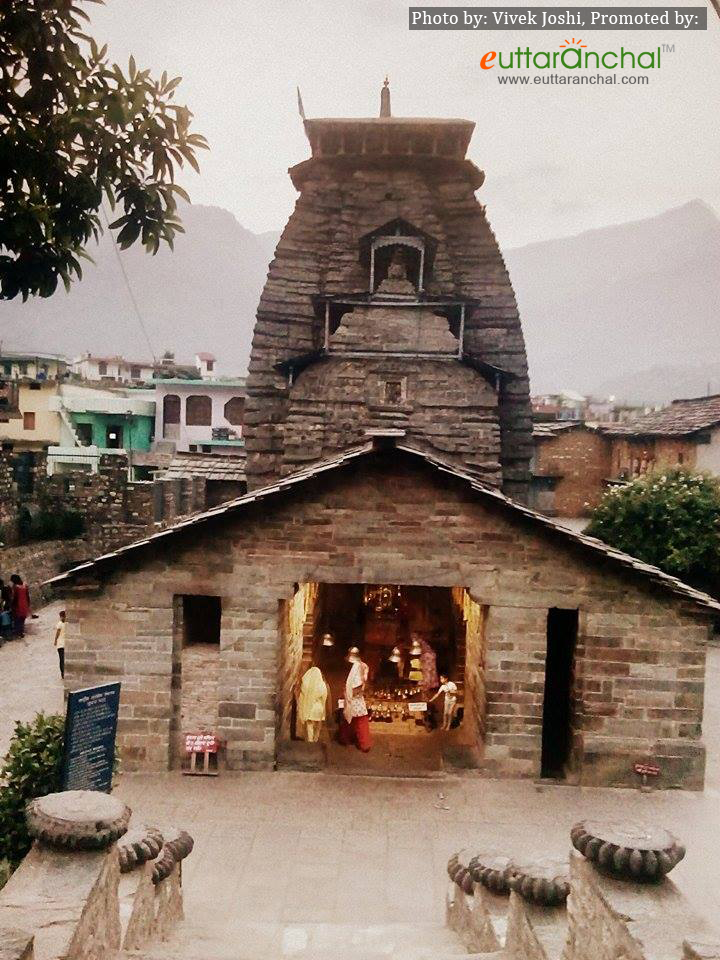
Photo Src: Vivek Joshi
This ancient Hindu temple is en route Rishikesh-Gaurikund, Rudraprayag. It is one of the famous temples of Lord Shiva in his divine form of Vishwanath the “Lord of the Universe”. The temple houses several shrines dedicated to Shakti and a giant brass trident is erected on the premises of the temple, having inscriptions of how the temple was built.
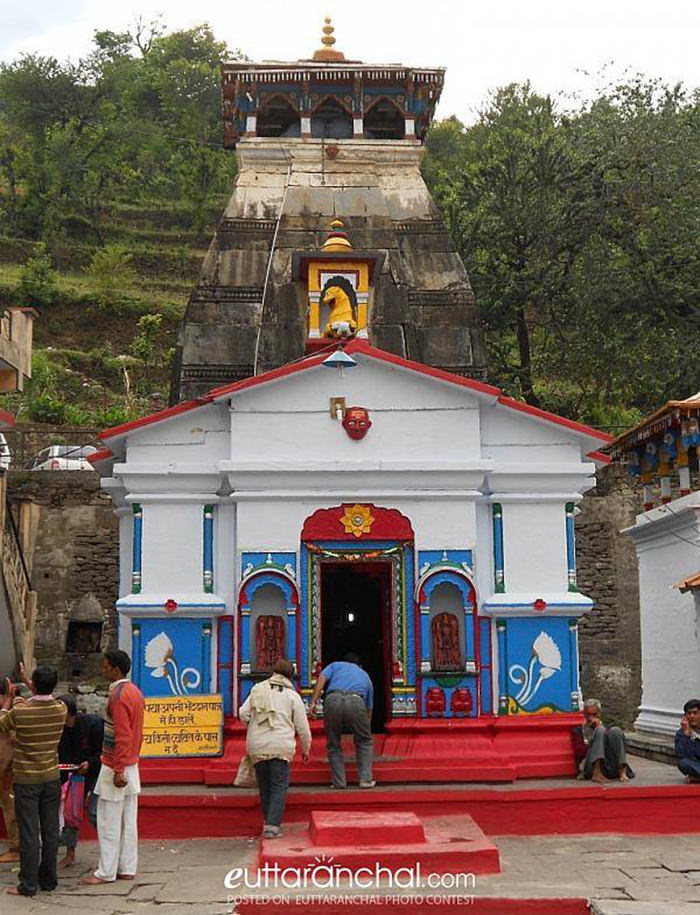
Photo Src: Abhisar
In the midst of the beguiling woods of deodar in Almora district, the Binsar Mahadev temple is situated. This old temple dates back to 9-10 century and is said to be built in a single day. This temple is only 19 km away from Ranikhet. During Vaikunth Chaturdashi, women carry diya or lamp on their palm and pray to god for bearing a child.

Photo Source: Vijender Nagarkoti
Cradled in the lap of Doon Valley, the Tapkeshwar Mahadev Temple is a cave temple which enshrines a Shivalinga inside a dark cave. It is located about 6.5 km from the main city of Dehradun, near a beautiful stream. A Hindu mythological tale has been associated with this temple which states, when Guru Dronacharya’s wife Kalyani gave birth to Ashwatthama, she couldn’t breastfeed him and Guru Dronacharya was not able to buy a cow for feeding the baby. Ashwatthama then prayed to Lord Shiva for milk. Shiva was impressed by his prayers and granted his wish. The milk would drip from the Shivlinga installed inside the Drona Cave, where the family of Guru Dronacharya lived. Even today the water from the ceiling drops on the Shivalinga which is a delightful sight indeed. Tapak is a Hindi term which means to drip hence, the temple was named as Tapkeshwar Mahadev.
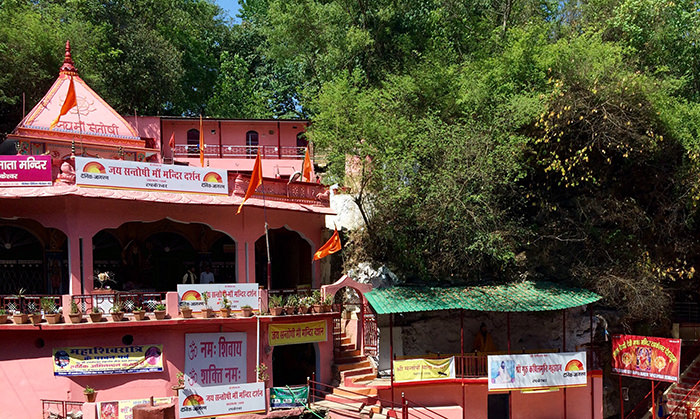
Photo Src: chauhanvikrant.wordpress.com
The Koteshwar Mahadev temple is located at a favourable distance of 3 km from Rudraprayag town. As per Hindu beliefs, this is the place where Lord Shiva meditated in order to get rid of Bhasmasur, a demon who had the power to burn a person with the touch of his hand.
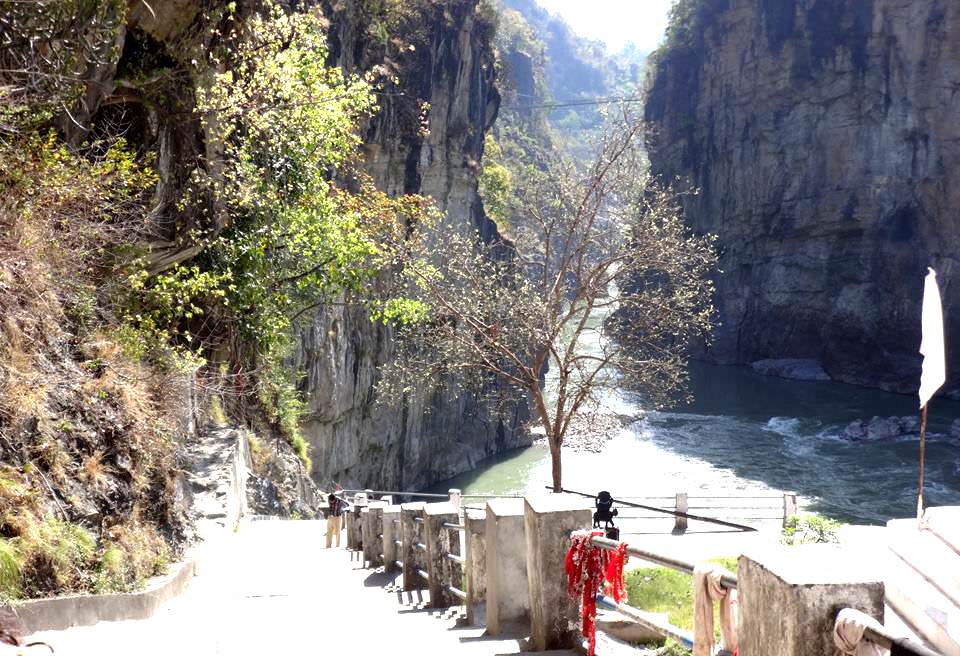
Photo Src: Nidhi Chauhan
This small hill temple is located in the refreshing vistas of Srinagar region of Pauri Garhwal. The temple sees a number of devotees and it is said that during Kartika Chaturdashi if a childless couple stands in the front of the temple, holding an earthen lamp for the whole night is blessed with a child. Also, during the auspicious Achra Saptami, i.e. the second day of Vasant Panchami, 52 types of dishes are prepared and offered to the deity.
Baghnath means “The Master of Tiger” as Shiva is found seated on a tiger skin. This temple lies on the confluence of Gomti and Sarayu rivers, located about 90 km from Almora. During Shravana, a large number of devotees visit this temple to pay obeisance to the deity.
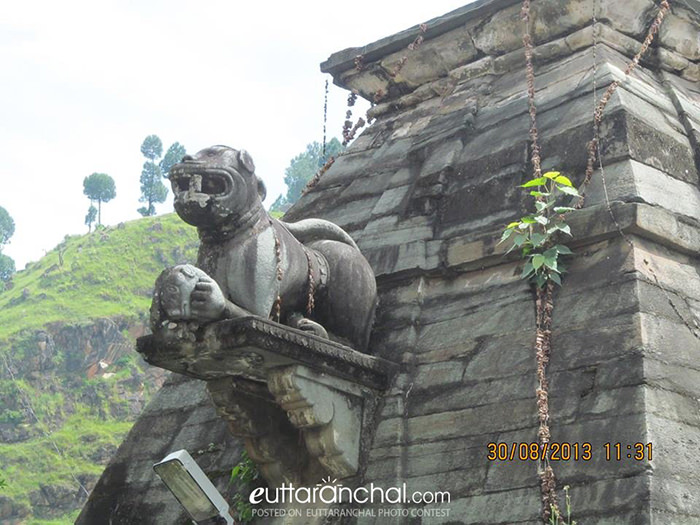
Photo Source: JADLI
The Baleshwar temple is located in the heart of Champawat approximately 74 km from Pithoragarh, Uttarakhand. This Hindu temple dates back to 10-12 century and showcases marvellous murals made on its walls and pillars.
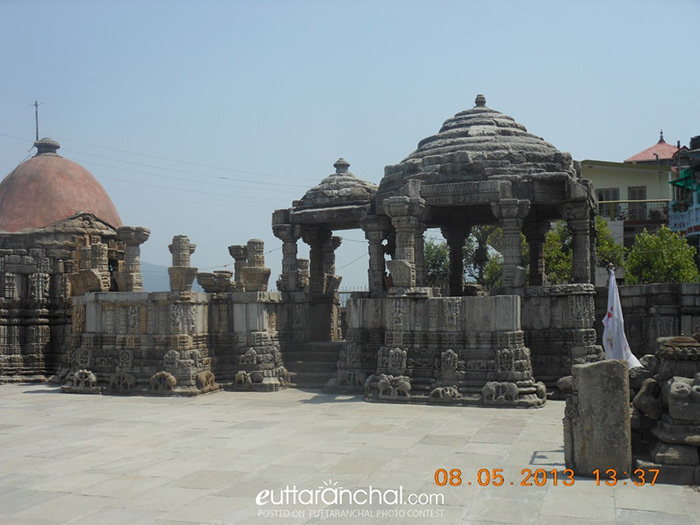
Photo Source: Jamuna Prasad Tiwari
One of the popular pilgrimage places of Dehradun, the Lakha Mandal temple is located in the suburbs of Dehradun. The temple boasts a marvellous architecture and houses several Lingams along with the effigies of gods. As per Hindu mythology, Duryodhana made Lakshagriha in this place to burn the Pandavas brothers alive. Many devotees visit this temple for happiness, prosperity and to get rid of misfortune.

Photo Source: Shubham Rawat
This pious temple of Lord Shiva is situated in the Jairikhal block of Lansdowne tehsil in Pauri Garhwal district of Uttarakhand. The Tarkeshwar Mahadev temple narrates a tale of Tarkeshwar, a demon who was blessed with the boon of immortality. He killed many saints and disturbed the peace on earth. Later on, he was killed by Kartikeya, the son of Lord Shiva. Taking his last breath the demon asked forgiveness from Lord Shiva, the deity then said that the temple where he meditated will be worshipped by the people in Kalyug and the place will be known as Tarkeshwar Mahadev.
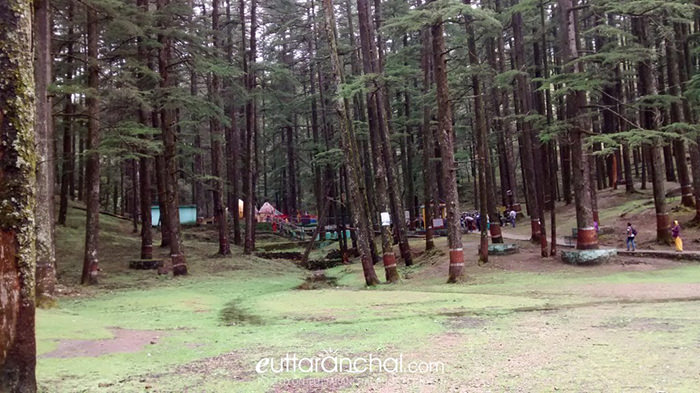
Photo Source: Sanjaybadola
Seated in the hush abode of Triyuginarayan village of Rudraprayag district, this temple is dedicated to Lord Vishnu and Lord Shiva is also worshiped here. As per the beliefs of the devotees, Lord Shiva and Parvati’s marriage was held at this temple. The temple is also referred to as Akhand Dhuni Temple which means a flame keeps on burning here inconsistently. It is believed that the flame is burning since last three Yugas or Ages.

Photo Src: Wikipedia
The Budha Kedar temple located in the Tehri-Garhwal region of Uttarakhand dates back to the period of Mahabharata and is associated with Pandavas. It is located about 59 km from New Tehri and is surrounded by the thick woodlands. The Budha Kedar temple stands in utmost grandeur on the confluence of river Bal Ganga and Dharam Ganga. A Shivalinga is installed in the temple and is believed to be the largest in Northern India.

Photo Src: tehri.nic.in